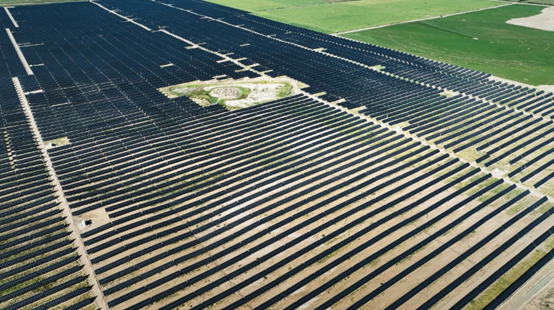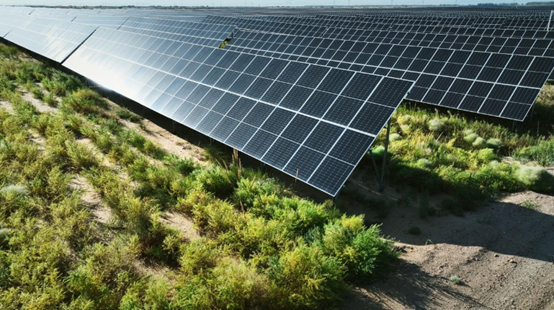Clean energy not only alleviates the power crunch but also significantly reduces environmental pollution. Photovoltaic projects in China are being combined with desert management, showcasing that clean energy is now an active solution for environmental improvement.
The Ulan Buh Desert in Inner Mongolia, China, is the perfect location for this PV project. With 3,181 hours of light and 150 kcal/square centimeter of solar radiation, this area is abundant in sunshine resources, making it highly suitable for our project.

In desert areas, photovoltaic components can effectively reduce water evaporation and night dew by absorbing the sun's rays and blocking the sunshine. Moreover, spraying water on the photovoltaic panels can significantly promote the survival and growth of vegetation. Combining photovoltaic and planting enhances the stability of the photovoltaic system and greatly improves the microclimate of the sand control area. This effectively reduces natural disasters such as dry hot winds and sandstorms.
Constructing photovoltaic power stations involves using spiral perforators to fill column piles or metal spiral piles to create pile foundations. These rely on strong tensile force to stabilize themselves, increase contact area with the sand, enhance stability, and ultimately solidify the desert.

And under the photovoltaic panels can generally be planted on a large scale with all kinds of trees, shrubs, grass seeds and herbaceous plants, which usually have more branches in the near-ground layer, with lush foliage and leaves, and can also greatly increase the roughness of the ground, This can cut off the direct action of the wind and the sandy soil surface, reduce the wind speed in the near-ground layer, reduce the amount of sand transport, and make the flowing sandy land turn into semi-fixed and fixed sandy land in a short time, so it can play a role in preventing the wind and fixing the sand.
"According to the geographical characteristics, we planted honeysuckle, oil peony, alfalfa and other crops between the panels, which can not only play the role of wind and sand fixing, but also bring economic benefits." The photovoltaic power plant director of this light storage project area introduced.

In June 2021, this 100,000 kilowatt photovoltaic + ecological governance power plant will be connected to the grid at full capacity, which can realize the restoration and governance of 3,000 acres of desert, provide green power to the grid of about 200 million kilowatt hours per year, save 62,000 tons of standard coal consumption per year, and at the same time greatly reduce the emission of carbon dioxide and soot.
This project provides a broader idea for the future development of photovoltaic projects, perhaps one day we will no longer unilaterally demand energy from nature, but can also give green back to the earth.





